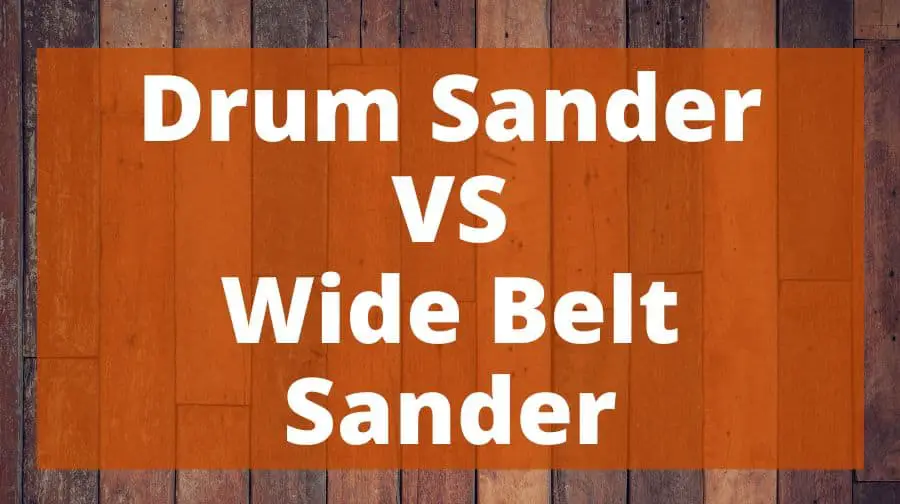
When it comes to woodworking, there are a few pieces of equipment that are essential for any workshop. Two of the most popular tools are the drum sander and the wide belt sander. So, which one should you use?
In this blog post, we will compare the two machines and help you decide which is the best fit for your needs.
Table of Contents
What Is A Drum Sander And What Does It Do?
A drum sander is a powerful tool to sand down the wood. It consists of a cylindrical drum that spins around and has abrasive material attached to it. Place it against the surface of the wood. Move back and forth to remove any imperfections.
Drum sanders are very popular because they are so versatile. They can suit any type of wood, including hardwood. They can remove a variety of imperfections, such as scratches, dents, and stains.
What Is A Wide Belt Sander And What Does It Do?
A wide belt sander is a strong tool that can sand large surfaces quickly and efficiently. They are in woodworking shops to remove stock from lumber, level off boards, or create smooth finishes on the rough lumber.
There are two main types of wide belt sanders: stationary and portable. Stationary wide belt sanders are large machines that cannot move. Portable ones are smaller and can bring to the job site.
Wide belt sander parts include the conveyor belt, the platen, the table, and the head assembly.
The conveyor belt moves the workpiece through the machine. The platen is a flat surface that the workpiece rests against as it moves through the machine. The table is a flat surface that the operator uses to guide the workpiece. The head assembly contains the motor and sanding belts.
The wide belt sander uses abrasive belts to sand the wood.
There are three types of wide belt sander heads: contact, segmented, and drum.
Contact heads have a solid piece of sanding paper that is in contact with the workpiece at all times. Segmented heads have a drum that has many small pieces of sanding paper. Drumheads have only one rotating drum.
Subscribe to Jon Peters – Longview Woodworking on YouTube
What’s The Difference Between A Wide Belt Sander And A Drum Sander?
Here’s a quick overview of the key differences between these two types of sanders:
Wide Belt Sanders:
– Wide belt sanders are best suited for large and flat surfaces.
– They have a wide and abrasive belt that helps to evenly sand large areas quickly!
– Wide belt sanders are for rough or finish sanding.
Drum Sanders:
– Drum sanders suit smaller projects or tight spaces the most.
– They have a rotating drum with an abrasive surface.
– Drum sanders are for finish sanding only.
Which One Should You Use For Your Projects – The Drum Sander Vs The Wide
Belt Sander?
The size of your project will help determine which sander you should use. A wide belt sander is better for large projects, while a drum sander is more suited for smaller pieces.
Another factor to consider is the type of wood you are working with. Softer woods will require a different grit than harder woods. You’ll also want to take the grain into account – sanding against the grain can cause damage to your project.
Ultimately, the best way to figure out which sander is right for you is to experiment with both and see what gives you the best results. With a little practice, you’ll be a pro in no time!
Can I Use A Drum Sander On My Deck?
There is a temptation to use a drum sander on your deck but resist the urge. Drum sanders are very sturdy tools that can remove a lot of material quickly! This is great for floors, but not for decks. These are from softer woods like cedar or redwood that can get gouged from the heavy-duty sanding drums, ruining your deck. A drum sander makes it difficult to achieve a smooth finish.
Subscribe to Made by Wolfe on YouTube




